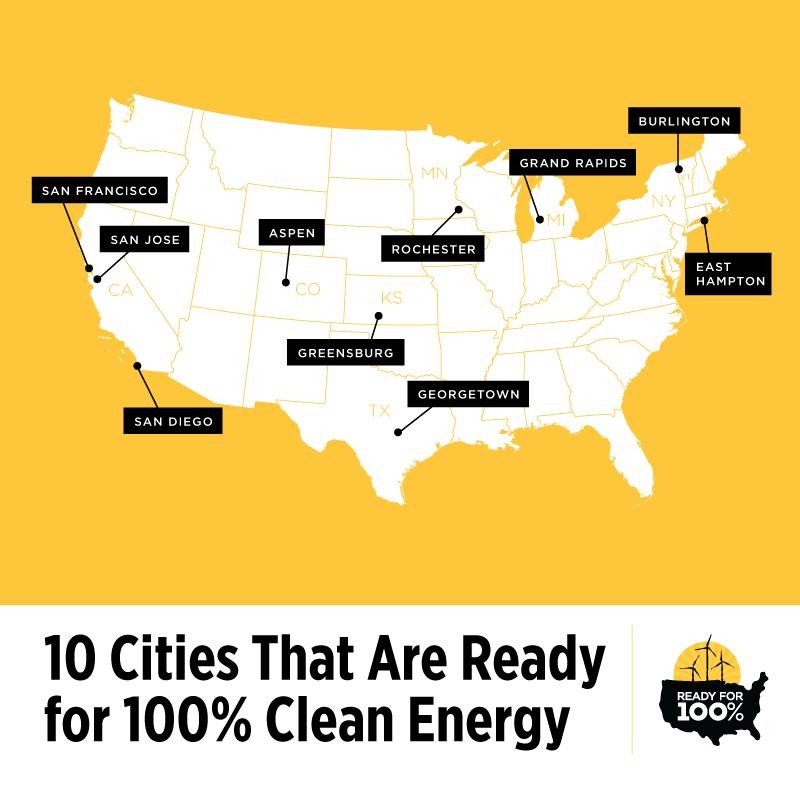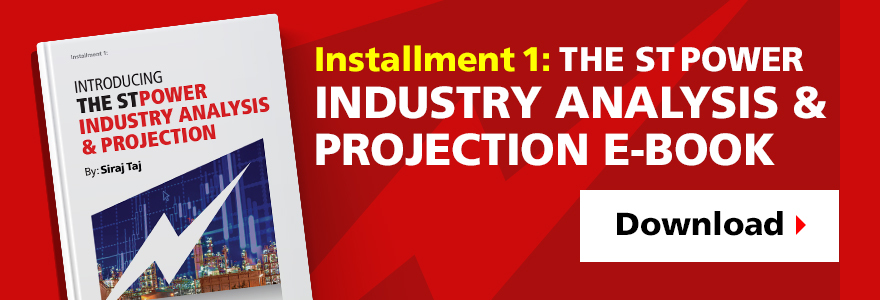
According to Sierra Club’s Ready for 100 Initiative, many cities and states across the U.S. are on the path to confronting climate crisis by transitioning to 100% clean or renewable sources of energy. These 100% goals are becoming the new normal and the paths to achieving them are beginning to emerge. However, energy is complicated and there are challenges and risks in achieving 100% goals.
The terms “clean” and “renewable” are often thought to be interchangeable; however, there are subtle yet impactful differences between “clean” and “renewable” sources of energy. Renewable energy is derived from sources that can naturally replenish themselves, i.e. wind and sun. The clean energy (aka zero-carbon energy) sources consist of nuclear energy, fossil fuel energy with carbon-neutralizing technologies such as Carbon Capture and Sequestration (CCS), and renewable energy.
California recently enacted Bill SB100, legislation requiring the state to acquire 100% of its electricity from clean energy sources by 2045. It mandates 60% renewable energy sources by 2030 and the remaining 40% can come from other carbon-free sources. Similarly, 114 U.S. cities have officially declared they want 100% renewable energy sources for their electric power needs within the next two decades.
The cost of new-build renewable energy sources is coming down and the marginal cost for operating them is near zero, which makes renewables the most competitive source of electricity. According to the Energy Information Administration (EIA), renewable energy will account for about one-third of new electricity generation added to the U.S. grid over the next three years. Wind energy leads the way with 19,500 megawatts (MW) of installed capacity. Another 17,000 MW of wind, solar, and geothermal energy sources are now under construction. The accelerated growth of renewable energy projects is a response to high energy prices and growing state government support. In addition, uncertainty surrounding the end-of-year federal tax credits has led developers to expedite project completion by December 31.
Speed Bumps on the Path to Clean Energy
Most markets evaluate the competitiveness of energy sources by their levelized cost of electricity (LCOE) — the average price of electricity to break even over its lifetime without considering the value of flexibility to the energy system. Integrating renewable energy sources with dispatchable, carbon-free energy resources will strengthen renewables’ success in the medium to long-run.
But large quantities of renewable energy sources pose challenges for the grid when it comes to maintaining power system stability. The electric grid must be reliable and resilient to integrate renewable energy sources to achieve 100% clean energy goals.
Renewable energy is highly unpredictable and difficult to forecast. It tends to peak at the moments when consumer demand is lowest and recede at the moments when demand is greatest. As increasing amounts of renewable resources come on line, challenges emerge for using those resources efficiently. Ideally, when the sun is shining or the wind is blowing, utilities would want to utilize all available renewable energy in real time. However, there are times of the day when there is an oversupply of electricity forcing a need to curtail generation. Curtailment, in turn, diminishes return on investment and environmental benefits.
Recent studies show that the risk of oversupply will grow in the near future with higher levels of renewable generation even after fossil fuel power plants have reduced their output. If the renewable generation were to be curtailed to mitigate the risk of overgeneration, that would be a missed opportunity to consume clean energy at low marginal cost. The risk of curtailment can be minimized by exporting excess power to other markets, developing energy storage systems, and electrifying transportation.

Credit: Sierra Club’s Ready for 100 Initiative
Bridging the Inherent Gaps of Clean Energy
It is critical for electric utilities to collaborate with local communities, corporations, and power producers to jointly make energy-related decisions because utilities know the potential costs and benefits of those decisions. In 2017, 23 Fortune 500 companies had set 100% renewables goals. That number has grown to 53 companies in 2018.
Relying more on renewable energy sources to meet our energy needs will require thoughtful discussions on innovating technologies, defining regulatory and legal frameworks, and creating real-time regional energy markets to effectively manage electricity oversupply.
For example, the CAISO’s Energy Imbalance Market (EIM) is a real-time energy market designed to automatically find low-cost energy to serve real-time consumer demand across a wide geographic area.
All ISOs and Regional Transmission Organizations (RTOs) run integrated day-ahead markets and real-time markets, but EIM enables CAISO to make its markets available outside of its ISO territory, resulting in grid reliability and cost savings for EIM participants. It allows participants to buy and sell power close to the time electricity is consumed and gives system operators real-time visibility across neighboring grids. The market platform balances supply and demand fluctuations by automatically identifying lower-cost resources to meet real-time power need.
To meet 100% clean energy goals, it is critical to integrate renewable generation and distributed energy resources, increase energy efficiency standards, and encourage investment in the infrastructure necessary to support commercial, Industrial, and transportation consumers.
Want to hear more? If you’re attending Electric Power ’19 in Las Vegas April 23-26, be sure to see Siraj and his peers discuss clean energy and other critical topics at “Western Energy Markets: The Challenge of Charting a New Course,” which is taking place April 24 at 1 p.m. at the Mirage Convention Center.


